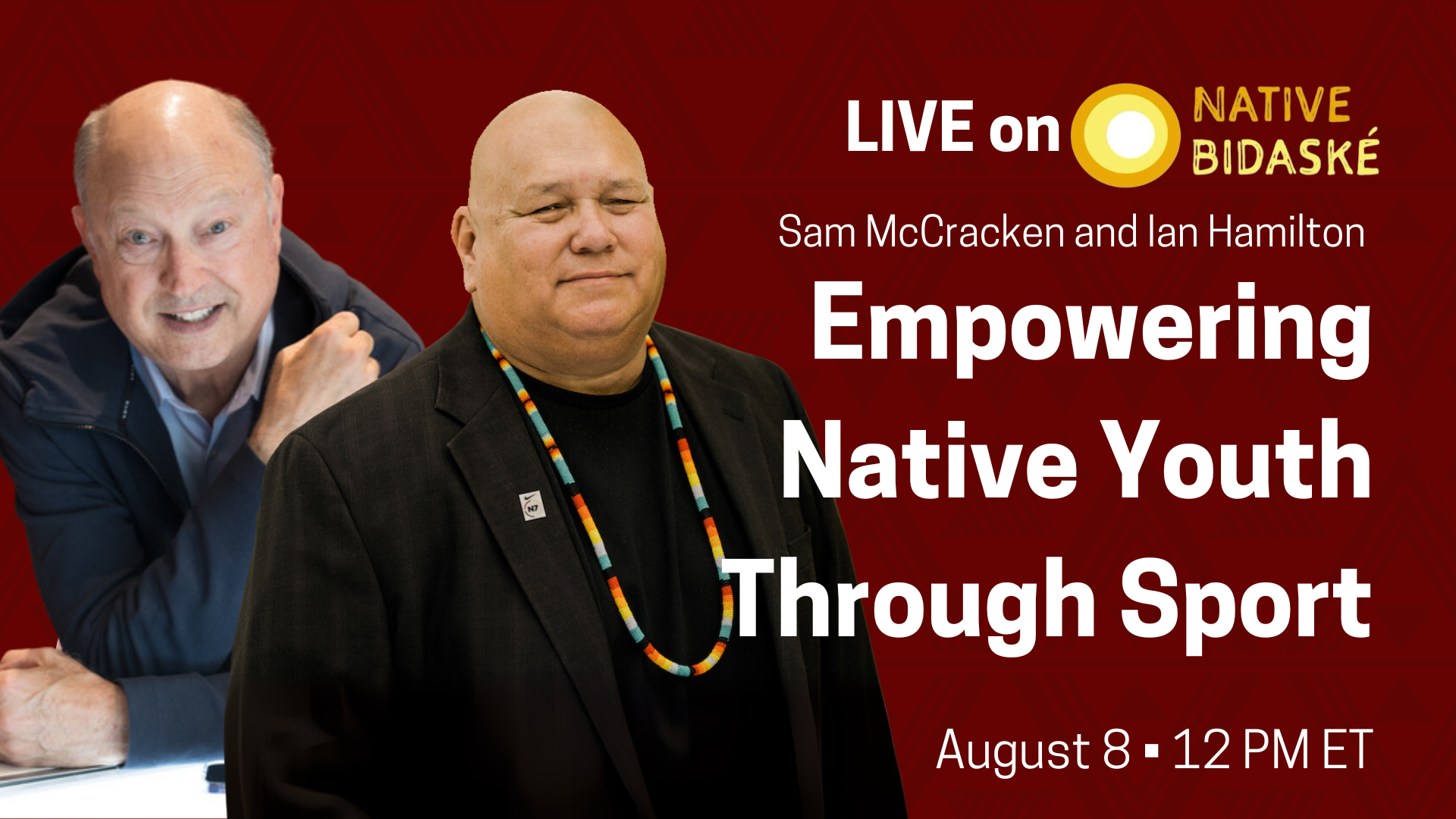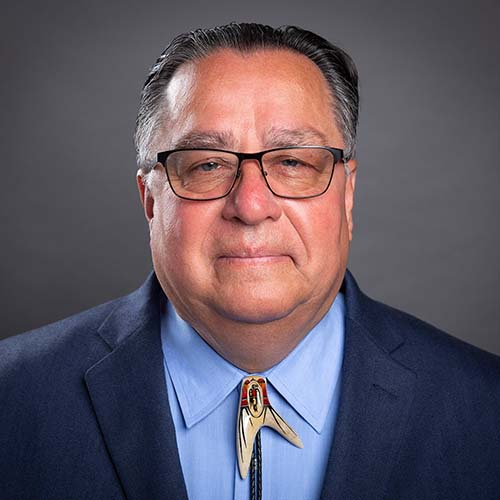
- Details
- By Native StoryLab
On the latest episode of Native Bidaské, host Levi Rickert sat down with two leaders making a real impact in Indian Country’s sports landscape: Sam McCracken, founder and general manager of Nike’s N7 division, and Ian Hamilton, global vice president of partnerships at U.S. Sports Camps. Their collaboration is helping more Native youth get active, build confidence, and see new possibilities for their futures.
McCracken, a citizen of the Fort Peck Assiniboine and Sioux Tribes, has spent 28 years at Nike, 25 of those leading the N7 initiative. What began as a wellness program evolved into a full-fledged brand and the N7 Fund, which has raised millions for Native youth scholarships. Among its innovations is the Nike Air Native N7 shoe, designed for people with neuropathy, often linked to Type 2 diabetes.
Hamilton’s U.S. Sports Camps brings 50 years of expertise in running skill-development camps nationwide. Together, N7 and U.S. Sports Camps bring free, community-based sports programs directly to tribal communities—no travel required for participants. The camps welcome youth of all genders, backgrounds, and skill levels, offering coaching from top local and national athletes.
The partnership has reached Native youth at major sports moments, including the Super Bowl and MLB All-Star Game, as well as local events like McCracken’s annual Fort Peck Youth Summit in Poplar, Montana. Camps have ranged from 80 kids in rural Montana to 200 at large-scale events in Phoenix. Activities span multiple sports like football, baseball, softball, and more, and include mentorship from Olympians and professional athletes.
For McCracken, the mission goes beyond physical activity. “You can’t be it if you don’t see it,” he said, stressing the importance of Native youth meeting role models who share their heritage. The camps aim to inspire hope, counter youth suicide rates, and encourage healthy lifestyles.
As McCracken prepares to retire from Nike, he’s confident N7 is in good hands under the incoming leader. But he isn’t stepping away from the work; he plans to keep using his network to expand youth sports opportunities across Indian Country.
Hamilton agrees the impact is too great to stop. “It’s too beneficial to these kids,” he said. “If they walk away wanting to try a new sport, join a team, or just keep moving, we’ve done our job.”
From astroturf stadiums to small-town football fields, the joy and smiles on the kids’ faces are the ultimate measure of success. As McCracken puts it, “There’s nothing more powerful than seeing a smile on their face at the end of camp… I feel like they walk away fulfilled.”
Watch the full episode here
Help us defend tribal sovereignty.
At Native News Online, our mission is rooted in telling the stories that strengthen sovereignty and uplift Indigenous voices — not just at year’s end, but every single day.
Because of your generosity last year, we were able to keep our reporters on the ground in tribal communities, at national gatherings and in the halls of Congress — covering the issues that matter most to Indian Country: sovereignty, culture, education, health and economic opportunity.
That support sustained us through a tough year in 2025. Now, as we look to the year ahead, we need your help right now to ensure warrior journalism remains strong — reporting that defends tribal sovereignty, amplifies Native truth, and holds power accountable.
 The stakes couldn't be higher. Your support keeps Native voices heard, Native stories told and Native sovereignty defended.
The stakes couldn't be higher. Your support keeps Native voices heard, Native stories told and Native sovereignty defended.
Stand with Warrior Journalism today.
Levi Rickert (Potawatomi), Editor & Publisher
